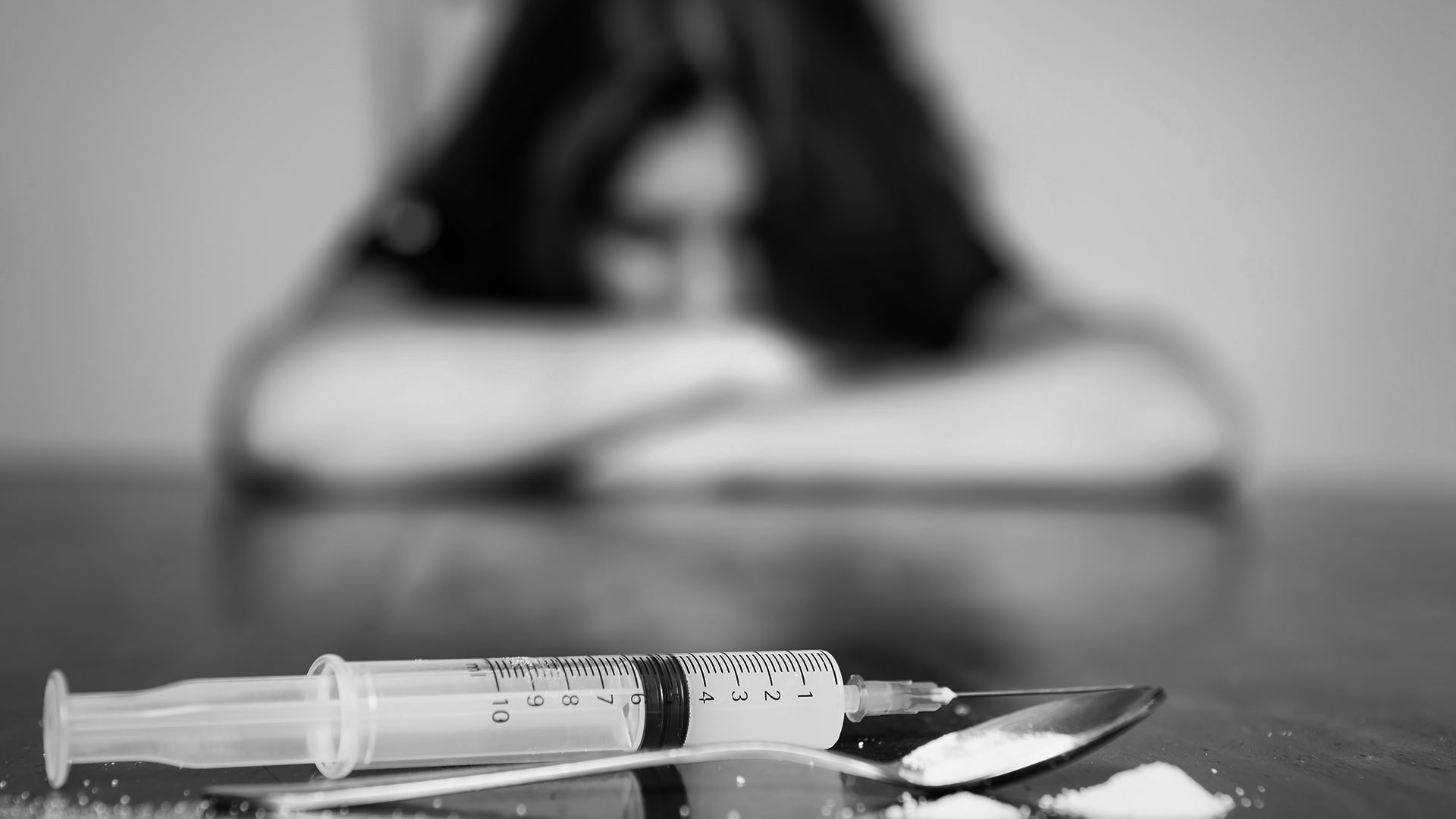31 Aug How Long Does a Heroin High Last?
Table of Content
How long does a heroin high last? Typically, dopamine is naturally released from the brain where it is recycled and returned to the cell it is initially released. However, dopamine released due to heroin use is not recycled, which results in excessive amounts becoming stored in the brain. This is disruptive to regular brain functioning and releases the feelings of euphoria. These occur right away but then disappear after only a few minutes.
Smoking heroin or injecting heroin leads to a more intense high, but is shorter lived than when the drug is snorted. Snorting heroin creates a less intense high for a longer span of time; usually, 15 to 30 minutes. Regardless of how the drug is administered, it seems like a relatively short period to chase a high that can have such long-term damaging effects on the body.
These short bursts of use are what lead to drug abuse and addiction. Drug abusers want to reach the high as much as possible, especially since it’s so short. They will increase their dosages and time between use, to achieve the high faster and more frequently. Due to its addictive power, heroin takes over the brain and the body and can cause a person to quickly spiral out of control without even realizing it.

Definition of Heroin
Heroin (opium) has been around for centuries and derives from a certain variation of poppy plants. It is distributed either as a white powder, brownish powder, or black tar.
The drug is part of the opioid classification, which is usually prescribed as pain relievers. Legal medications & prescriptions including Fentanyl, Vicodin, Oxycontin, and Demerol are all opioids and come in tablet form. They are reserved to help those who suffer from chronic pain and for those who are recovering from post-surgical operations.
The white powder form of heroin is distributed mostly along the East Coast and originates from South America and Southeast Asia. It has a bitter taste usually cut with a sweetener or powdered milk to mitigate the taste. In this form, it’s snorted. Heroin as a black tar is injected under the skin or into the muscles. This form is popular in Mexico and sold primarily on the West Coast or in the Midwest areas of the U.S.
In recent years, heroin has increasingly become a more widely-used drug. There is a national drug crisis due to people who have become addicted to painkillers and turn to heroin because it is more readily available and less expensive. What once was a drug distributed and kept within inner city neighborhoods has begun to infiltrate suburban areas, especially among teenagers and young adults.
The Heroin Half-Life
How long does heroin high last? Half-life is the term used to reference the length of time before a drug is reduced by one-half in the blood. Heroin has a relatively short life, especially compared to other opiates, of 0.2-0.8 hours. However, it is still detectable in the body for a longer length of time depending on the testing method.
A urine test may trace heroin in the system up to 48-72 hours after the last time it was used. For frequent users, it can be detected up to a week. Hair and saliva samples can track heroin in the system for much longer periods, but may not be as accurate as a urinalysis.
Despite these half-life numbers, no one metabolizes the drug at the same rate. Factors such as age, weight, and overall health will all play a part in how long it takes for heroin to be fully cleared from the system.
Effects of a Heroin High
Heroin has a significant impact on the body and mind. Regardless of its brief feelings of euphoria, a heroin high consists of two stages. First, a person feels the immediate surge of mental clarity, arousal, and may feel they are truly focused. They may begin talking rapidly, bouncing from one topic to another full of energy.
Chronic users who increase their doses over time will experience stronger feelings as the drug changes the communication of the brain. This is where people can respond aggressively, suffer hallucinations, become irritable or paranoid. During this time, the user’s blood pressure and heart rate will spike. And, other symptoms will set in, such as dilated pupils, vomiting, and nausea.
After this phase passes, the user will feel the “downer” effects of heroin when the person is released from the high. In this stage, the user may feel depressed, highly agitated, and suffer insomnia. This cycle of highs and lows is intense making addicts continuously want to get back to the first phase.
Once drug dependency has set in, it becomes easier to overdose. It takes higher doses of heroin to achieve the same high as before. Addicts won’t wait for the high to fully wear off from the first dose; they will immediately take another hit, and another, to perpetuate the high and make it last as long as possible.
The body is unable to sustain this level of heroin when a person is ingesting it faster than it can be broken down and eliminated. Due to this repeated activity, accidental death due to overdose affected nearly 50,000 people in 2014.
Risks Associated with Heroin Use
Chronic users of heroin face severe health issues, such as cardiovascular damage, insomnia, and mental health concerns, including depression or bipolar disorder. After extended use, users high on the drug will feel like they are functionally more normally than when they aren’t using.
It’s not only a hit to their health drug abusers and heroin addicts face when taking the drug. They risk their health with how they administer it as well. Heroin is typically injected into the veins, which puts people at risks for blood-related diseases, such as hepatitis C and HIV, due to shared or used needles. Addicts also risk the chance of blood poisoning, bruising, and other complications as it results from shooting heroin via needles.
Heroin users also face changes to their behavioral patterns, appearance, and the way they think and feel. Many have suffered hallucinations, little to no appetite, and strong paranoia. Since the drug limits blood flow and constricts the vessels, it affects the functioning of the intestines, which can last for hours after use, and puts the person at risk for gangrene.
In addition to the increased risk of shared needles when a person injects heroin. It also puts the user in added danger due to the significant amount of the drug in the bloodstream all at once. Whether it’s the first time experimenting with heroin or someone who has used for months, every person is at risk for problems to their health, up to and including, death.

How Do People Become Addicted to Heroin?
Heroin is an addictive drug by nature. Even if a person feels like they have a handle on their use, that’s never the case when using heroin. The body goes through a physiological change when there’s continual use of heroin. Over time, the brain adapts to the stream of heroin-induced dopamine, causing the person to feel like they are functioning normally when high.
There is more than one reason why someone is susceptible to drug addiction. Teens and young adults are impressionable to use heroin due to peer pressure and improper types of coping methods for stress and anxiety.
It also affects people who are prescribed medication to recover from an injury or alleviate chronic pain. When their prescription expires, they still crave the feelings from the opiates used and turn to heroin to renew their high, since it is more easily accessible.
Drug withdrawal from heroin is not easy as it is highly addictive. Side effects can be painful (possible physical symptoms of withdrawal can be muscle aches, diarrhea, nausea and vomiting), posing yet another reason why addicts aren’t willing or able to quit on their own.
Heroin Addiction Treatment
Long-term effects heroin addiction can change a person’s physical appearance. Loved ones or family members of addicts will also notice a drastic change in personality and may discover drug paraphernalia in their home or car. Since addiction can overpower everyday life, it can be hard to hold down a job, which opens the door for other financial and relationship problems. If you believe that you or a loved one is expressing symptoms of heroin addiction may be time to seek professional help.
Treatment is an opportunity to turn things around for the better. It’s a chance to be involved in an environment designed specifically for those who are battling addiction. Each facility has its own benefits. All are safe, secure places where people can enter recovery in a peaceful way.
Once in substance treatment, addicts first must go through detox. The drug withdrawal process takes several days, and the most severe symptoms usually occur in the first few days. After the drugs are completely out of the system, it doesn’t mean the person no longer craves it. Treatment helps addicts address the cravings and know how to handle them in a healthy way.
Following heroin detox, there is the option of inpatient or outpatient care. Here is where you can discover the root of your addiction and identify negative influences and triggers to either eliminate from your life or learn how to deal with post-rehab.
The process is a shock to the system, which makes it equally important to have medical professionals who can help with the side effects and cravings, but also the emotional support necessary to keep moving forward with the recovery phase.
When deciding what type of treatment facility will work best for you or someone you love, consider what’s most important. Proximity? Cost? Atmosphere? All of these factor into where recovery will take place and be most successful.

Benefits of Inpatient and Outpatient Care
Many facilities are equipped for both detox and inpatient care. The recommendation for inpatient care is 28 days; although, this timeline is adjustable depending on a person’s needs and progress plan. Inpatient facilities are calm, secure environments intended to make the experience as comfortable as possible. There are facilities close to home. While others are located in the mountains, near lakes, or in other peaceful spaces to highlight the comfort level and wellness of those in recovery.
A benefit to an extended inpatient stay is it allows the person to focus on their sobriety without outside chaos to ultimately achieve long term recovery. When a person is first going through detox, it’s a vulnerable time as withdrawal symptoms take effect. It can be easy to relapse and start the cycle over due to the intense physical dependence. With inpatient care, you have the help of experienced staff who can guide you through tough times and give you tools to cope with any temptation and stressors that may arise after rehab.
For some programs, there is a transition from inpatient to outpatient care. Or, sometimes people opt for outpatient care only. They may wish to be closer to their home environment or still need to uphold certain daily obligations.
Outpatient care is also an option for those who have been through the complete detox and treatment process before and may need some additional help with their ongoing sobriety.
This stage of treatment requires a person to attend individual and group therapy. Classes are available in many programs to learn about addiction and tools for dealing with it outside of treatment. The transition from addiction to sober living is impactful and requires ample time and attention to address it adequately.
One type of care is not better than the other because each comes with its own benefits. It’s a matter of what you are looking for when entering rehab and finding a place you feel comfortable enough to rely on for the duration of your recovery.
Help Is Available
When you start asking yourself questions like “how long does heroin stay in your urine?”, it may be time to consider professional help. You don’t have to face your addiction alone; a positive result is not out of the question. There is support available to you whenever you are ready to reach out and accept it. To fully commit to sober living, you have to make the choice to give up heroin use altogether.
It’s your chance for a stronger future. This is your time to make positive choices for your long-term health and well-being. There is help available to guide you through this transition and right the path for your future.
Sources:
“How Long Does a Heroin High Last?” Recovery in Tune. 6 Mar. 2019. https://www.recoveryintune.com/how-long-does-a-heroin-high-last/
Hartney, Elizabeth. “What Does It Feel Like to Get High on Heroin?” Verywell Mind. 11 Nov. 2018. 6 Mar. 2019. https://www.verywellmind.com/what-heroin-effects-feel-like-22047
“Heroin High – Everything You Need to Know About the Rush.” Addiction Resource. 6 Mar. 2019. https://addictionresource.com/drugs/heroin/heroin-high/



 678-771-6411
678-771-6411


No Comments